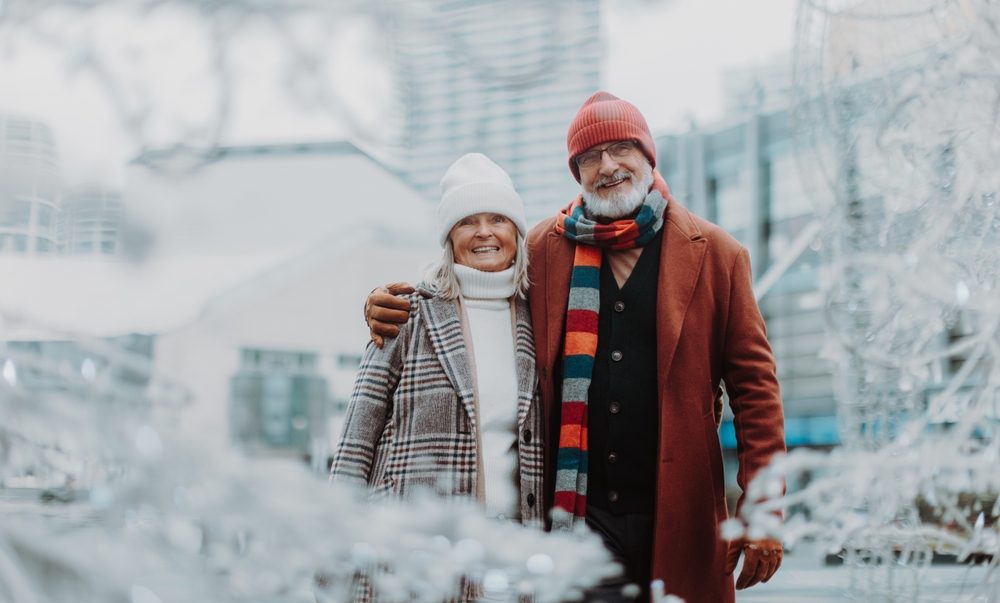Fall Prevention Month: How to Reduce Fall Risk at Home this Winter

Fall Prevention Month: Reduce Fall Risk
As temperatures drop and sidewalks begin to freeze, winter brings more than just cozy evenings and scenic snowfalls — it also increases the risk of falls, especially among older adults. In Canada, slips and falls are one of the top causes of injury for seniors, often leading to decreased confidence, mobility challenges, and hospitalization. The good news? With a few simple preventive steps, many of these accidents can be avoided, helping seniors stay safe, comfortable, and independent at home.
Why Falls Are More Common in Winter
Winter introduces new challenges for older adults. Ice and snow reduce traction, heavy clothing restricts movement, and shorter days mean less visibility. Indoors, wet floors and cluttered entrances add to the risk. Older adults may also experience slower reflexes, balance changes, or medication side effects that make recovery from a slip more difficult. Preparing early helps families stay ahead of these risks before the first snowfall arrives.
1. Keep Outdoor Areas Clear of Snow and Ice
One of the most effective ways to prevent falls is to ensure outdoor spaces remain free of snow and ice. Snow shovelling, while essential, can be physically demanding and even hazardous for older adults.
Vyta’s Winter Snow Removal Services provide unlimited visits throughout the season, keeping driveways, walkways, and entrances safe and accessible. Reliable, timely service means no more rushing outside after a storm — just peace of mind knowing your home is always winter-ready.
2. Improve Lighting Inside and Outside the Home
With fewer daylight hours, visibility becomes a major factor in fall prevention. Make sure outdoor steps, paths, and entrances are well-lit, and replace burnt-out bulbs early in the season. Indoors, add nightlights in hallways, bedrooms, and bathrooms to make nighttime movement safer. Motion-sensor LED lights are a great, energy-efficient option that turn on automatically when movement is detected.
3. Keep Entrances Safe and Organized
Winter gear can easily create clutter near the door. Wet boots, melting snow, and slippery mats increase the risk of falls in high-traffic areas. Keep entryways tidy with waterproof mats, boot trays, and a sturdy bench or chair for removing footwear safely. Non-slip mats help contain moisture, while a designated space for canes or walkers ensures stability when coming and going.
4. Choose the Right Winter Footwear
Footwear is one of the simplest yet most overlooked ways to prevent slips. Encourage older adults to wear boots with non-slip soles and ankle support, even for short trips outdoors. Avoid smooth-bottom shoes and make sure boots fit snugly. Indoors, replace worn slippers with pairs that have rubber grips or anti-slip soles for extra traction.
5. Add Handrails and Non-Slip Surfaces
Supportive handrails can make a major difference in maintaining balance and confidence. Install sturdy rails on both sides of outdoor steps and ramps, and apply non-slip strips or treads to porches, decks, and stairs. Indoors, consider grab bars in bathrooms and non-slip mats near sinks, tubs, and showers.
6. Maintain Strength and Balance Year-Round
Staying active is one of the most effective ways to prevent falls. Balance and strength exercises — such as yoga, light stretching, or guided physiotherapy routines — can improve coordination and help older adults stay steady on their feet. Even gentle daily movement promotes better posture, flexibility, and confidence on icy surfaces.
7. Plan Ahead for Safer Winter Living
November is Fall Prevention Month — the perfect time to review your home and create a safety plan before winter conditions worsen.
Take a moment to ask:
Are outdoor railings sturdy and steps in good shape?
Are lights bright enough around entrances?
Do you have a plan for snow and ice removal?
If you’re unsure where to start, our Cold Weather Home Safety Checklist is a great companion guide. It outlines simple, proactive ways to prepare your home and reduce risks before the snow arrives.
How Vyta Helps Reduce Fall Risk at Home
At Vyta, we believe aging in place should feel safe, supported, and stress-free. Our team helps families manage every detail of home and care — from seasonal maintenance and snow removal to personal support, companionship, and in-home nursing.
By coordinating the right services under one roof, we help older adults maintain their independence while families gain peace of mind knowing their loved ones are cared for — safely, comfortably, and with dignity.
Final Thoughts: Safety Begins Before the Snow Falls
Preventing falls isn’t about doing everything at once — it’s about making small, steady improvements that protect your health and comfort throughout the season.
This winter, take proactive steps to clear pathways, improve lighting, and ensure reliable snow removal is in place.
Because when your home is safe, you can focus on what matters most — enjoying the warmth of family, the beauty of the season, and the comfort of staying right where you belong. 💚
💬 Speak to a Vyta Lifestyle Advisor today to learn how we can help keep your home and loved ones safe this winter.